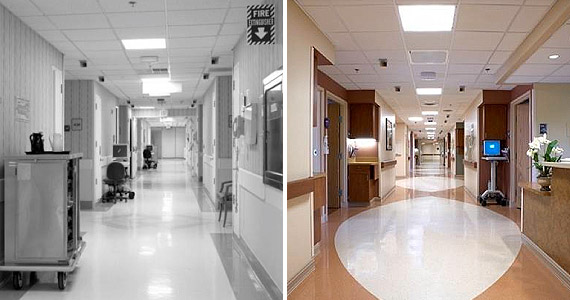

Ideally there would always be adequate land available on-site for expanding current facilities to accommodate additional capacity.When adjacent land is not available, we begin to look at “replace-in-place” concepts. This approach requires soft space that can be relocated either off-site or in temporary conditions on-site. Appropriate planning and phasing is then needed to continue the domino effect until the final configuration can be achieved.
Age of the Existing Infrastructure
Obviously, the older the facility is, the more difficulty there will be in renovating it. However, if there is adequate space in the central plant configuration and there is enough floor-to-floor space, the options are much more robust.
• Capacity – Central Plant capacity can be in the form of available area to add new equipment or in the form of available capacity within existing equipment. Capacity within existing equipment typically comes at the expense of available redundancy.
• Flexibility – Flexibility can be available vacant space to grow a particular service line or in appropriately located “soft” space that can either be reduced in square footage or relocated off-campus. This allows existing service lines to expand as new technology is developed or for new service lines to be added to capture changing markets.
• Adaptability – Adaptability has more to do with individual room size and configurations. Appropriately sized procedure rooms have the ability to accommodate changes in technology or the addition of new companion technologies.
Alignment with Service Lines
Does Current Facility Match Service Line Opportunities?
This may seem to be an obvious alignment, but often times what a facility strives to deliver does not match the functional space needed to excel at that delivery. For example, a rehab hospital that provides spinal or neuro-rehabilitation will require very specific acute care services in addition to traditional rehab functions.
Universal Room Concept
This concept has many impacts to how a facility views renovation vs. new construction as well as operational impacts across service lines. The impact of increased family participation and multi-disciplinary care teams has resulted in room sizes becoming much larger compared to traditional room configurations. This, in turn, requires more square footage and makes renovation in place more difficult. The impact across service lines has ties to regulatory requirements and will be part of a separate discussion.
Ultimately, the decision on whether to renovate or build new comes down to the current state of the facility and how closely aligned that facility is to the design vision and delivery of services. The closer those two aspects are aligned, the more likely that renovation is the better choice. However, there are many variables that go into the final decision and there is no definitive solution for any one facility.




